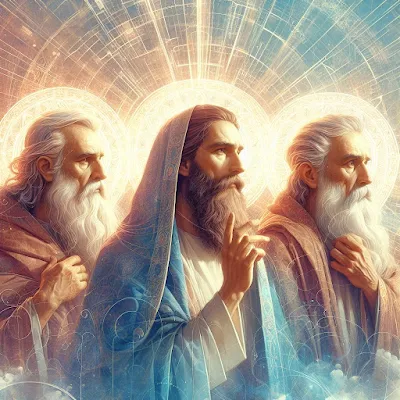Sustaining Spiritual Order | Unveiling the Kohathites' Organizational Role
In ancient Israelite history, the Tribe of Levi holds a unique and revered position. Among the Levites, the Kohathites emerge as key custodians, not only of sacred artifacts but also as organizational pillars within the religious structure. Let's embark on a journey to unravel the organizational role of the Kohathites, exploring their contribution to sustaining spiritual order within the community.
1. A Tribe Apart: The Levitical Calling
The Levites, including the Kohathites, were set apart from the other tribes of Israel to fulfill specific religious responsibilities. As custodians of the tabernacle and sacred vessels, the Kohathites played a central role in maintaining the order and sanctity of the religious practices.
2. Custodians of the Sacred Artifacts
Central to the organizational role of the Kohathites was their responsibility for the transportation, care, and assembly of the tabernacle and its sacred artifacts. The Ark of the Covenant, the table of showbread, the lampstand, and the altars—all were under the meticulous care of the Kohathite lineage. Their organizational duties ensured that the sacred space was set up and dismantled with precision and reverence.
3. The Divinely Orchestrated Journey
As the Israelites journeyed through the wilderness, the Kohathites were entrusted with the sacred task of transporting the tabernacle from one location to another. This was no ordinary logistical task; it was a divinely orchestrated journey where every step and action was guided by specific instructions from God. The Kohathites' organizational skills were crucial in maintaining order during the transitions of the community.
4. Detailed Instructions for Order
The organizational role of the Kohathites extended beyond physical tasks to the meticulous adherence to divine instructions. Specific guidelines were given regarding who could touch the sacred vessels, how they were to be covered, and even the order in which the various branches of the Levites were to approach the tabernacle. This attention to detail reflected a divine commitment to sustaining spiritual order within the community.
5. The Significance of Rituals
Rituals performed by the Kohathites were not mere ceremonial acts; they were integral to maintaining a sense of order and reverence. The rituals associated with the tabernacle, such as the covering and uncovering of the sacred items, served as visible reminders of the divine presence and the need for order in approaching the sacred.
6. Lessons in Organized Devotion
The organizational role of the Kohathites offers timeless lessons in organized devotion. Their commitment to specific roles, attention to detail, and reverence for divine instructions serve as a model for individuals and communities seeking to establish and maintain spiritual order. In the chaos of the wilderness or the complexities of modern life, the Kohathite legacy encourages us to approach our spiritual practices with intentionality and order.
7. Contemporary Kohathite Principles
While we may not be transporting tabernacles through the wilderness, the principles of organized devotion found in the Kohathite narrative remain relevant. Today's seekers can draw inspiration from the Kohathites by embracing the importance of sacred rituals, attention to detail, and a commitment to divine guidance in their spiritual journeys.
8. The Legacy of Order
In reflecting on the Kohathites' organizational role, we uncover a legacy of order that transcends time. Their commitment to sustaining spiritual order within the community laid the foundation for a deep and meaningful connection with the divine. As we navigate our own spiritual landscapes, may we draw inspiration from the Kohathites and seek to infuse our lives with the same sense of organized devotion that marked their journey through the wilderness. In doing so, we honor not only their legacy but also the divine order that continues to guide us on our own paths of faith.















